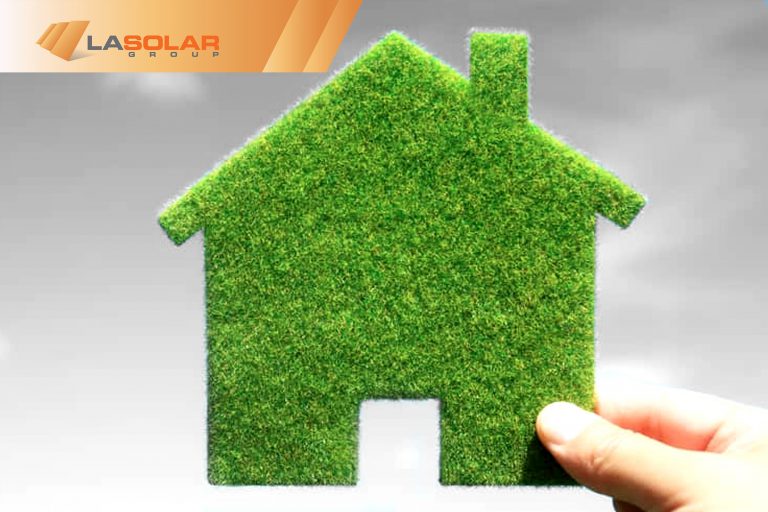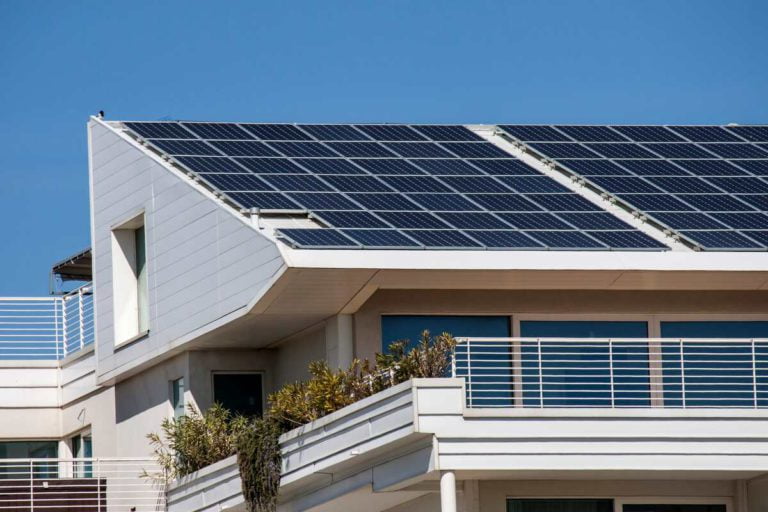Breaker Panel
Guide to Circuit Breaker Panels in your Home
The circuit breaker inside your home performs two crucial functions. It distributes power through your house to the circuits that provide the electricity you require. Circuit breakers interrupt electrical power flow when there is danger. They protect the circuits. We’ll be discussing what circuit breaker panels do and when it’s time to upgrade or replace them.
You probably don’t think of this particular component very often, but it’s one of the most crucial components of your home’s electrical system. It’s known by the name of a circuit breaker or the breaker box.
This is important because all electricity that is used in your home runs through it, and through the circuit breakers. If it’s properly configured it won’t be a problem to think about it.
If it’s not adequate for the job It could be extremely difficult to manage or could cause safety concerns for your home.
This article will provide an explanation of what an electrical panel is and how it works. We’ll also look at some reasons why you might want the main panel for your breaker checked by a qualified electrician of LA Solar Group. Let’s start by understanding the basics of the circuit breakers.
What is a breaker panel and how does it work?
The circuit breakers connect the electrical grid outside your house to your wiring. This is the main service panel that regulates all electrical outlets, lighting, heating, and other devices.
Service drop can be described as a way through which power is delivered to the breaker box through the outside. This can be either from power poles or underground power lines. The electricity is then routed through branch circuits to power your home.
You should also be familiar with other names
“Breaker panel” is a name that refers to the circuit breakers which supply power to the branches leading to the panel. It can also be referred to by many different names. It may also be called the circuit breaker, breaker box, or electrical panel. It works in the same manner regardless of what it’s given.
How it works
Circuit breakers are crucial safety devices that cut off branch circuits in the event that they sense an overload. This is why you could be noticing a circuit breaker tripping (shutting down) after you plug in several appliances in your kitchen.
This fuse box has an earlier version in the event that you’re older and reside in an older home. Fuses’ purpose were to safeguard your branch circuits from overloads. A blown fuse is required to be replaced to restore power for the circuit. A circuit breaker can be reset by simply flipping a switch.
Capacity of the breaker box
Amperage capacity is probably the most crucial figure to be aware of regarding your panel. Amperage (or amps) is a measurement of how much electricity is utilized. The amperage capacity for the breaker panel in your home has increased as homes get larger and more electrical appliances are used. While 200-amp circuit breakers are standard nowadays however, you may find panels or fuse boxes with ratings as just 60 amps in houses built prior to 1960.
Where can I find my main fuse box?
It is possible that you are uncertain about where your breaker panel is situated if you’ve never had the opportunity to use it. There are a variety of common places.
Garages are often found in common areas. They’re usually positioned on the outside of a wall, in which power is supplied through the drop in service.
It’s not uncommon to see the panel for a breaker in a basement in the event of a buried powerline.
Another place that’s not common for single-family homes but may be more prevalent in a townhouse or duplex is on the lower levels of hallways, in a kitchen pantry or in a utility closet.
An exterior wall is not a common place which you may discover in older homes.
A look inside your electrical panel
Let’s get through the panel by opening the door.
It is impossible to see what you don’t know
The main breaker panel is within the box. There are some switches. Below are the hot and ground bus bars. Each individual switch you’ll see has its powered and ground wires routed to it.
Main switch
The panel’s top will have only one switch. This is the main breaker. This will turn off all power to your home.
Individual circuit switches
Two rows of number switch are among the very first things you find when you enter the panel’s door. These are the circuit breakers. Each one is responsible for the circuits in your home. The circuit breakers should be switched on to allow power to flow through them. Circuits will get shut out if the switch turned off.
A piece of paper with the details of the number can be found within the door’s door panel. The card may read “1 - Kitchen Outlets.” The switch can be turned on or off to shut off the electricity to your kitchen outlets.
It’s common to find the card not easy to understand or badly written. It’s worth spending some time with another person to review the switch controls and ensure that the card is clear and legible. This will allow you to understand how to shut off power to circuits such as if you need to replace an outlet or wall switch.
Switches with single-pole or double-pole poles
Your panel can have two kinds of circuit breakers.
- Single-pole breakers are called single switches having an amperage rating between 15 and 20 amps. They are commonly used in household circuits with 120 volts.
- Double-pole breaker is the double switch that has two switches that are connected. These are specifically designed to handle the voltage of 240 V and are equipped with higher amperage ratings. They can be connected with high-voltage circuits such as water heaters, furnaces, and air-conditioning.
The sub panel
You may find an additional panel next to the main box in some cases. You might have an outbuilding that you need to run on its own system, or you’ve made changes to the electrical system in your home. If a backup generator has been connected to the home’s electric system, then a sub-panel can be used.
The size that you need
There is a possibility of an article on the rating of breaker panels when you read up on panel upgrades and breaker panels. There are two most frequently discussed ratings being 100-amp or 200-amp. These ratings represent the power of the electrical panel.
100-amp
200-amp
These boxes are typical for new construction and are used for an average electrical requirement. You might require a larger panel box if your house requires more power or is extremely big.
250-amp
These panels are great for large homes that have a lot of electrical requirements, especially if the electricity is utilized to heat the house. You might need to upgrade your existing panel to a 250-amp or greater model if you’re upgrading the electrical system within your home to accommodate an extension building, workshop, or other outbuilding.
Signs your current panel is not up to the job
It’s likely that you’ve had the circuit breaker go off if you’re like most people. It’s time to turn off your blender, reset the breaker and get on with your life. This is a good example of your panel’s ability to do its job. If the issue isn’t occurring often, there’s nothing to worry about.
There are instances when it is not OK. These indicators could mean that your breaker panel is overloading or is not working properly. Let’s examine a few of these.
Frequent breaker tripping
A circuit breaker malfunction is not a an alarm signal. If any of the circuit breakers in your home need to be reset regularly, you may have a problem. Sometimes, the issue could be fixed easily by replacing it with a model of higher amperage. It is however, advisable to consult an electrician to ensure that this is possible.
Still have a fuse box
It’s time to replace your fuse box if you reside in an older residence. Circuit breakers are more secure and easier to use than traditional fuse boxes. It is also a good idea to have an electrical contractor conduct a thorough inspection of an electrical circuit.
There are black spots or burned areas.
You must immediately have your panel box examined if you notice this. It could be an electrical short in your panel box or faulty wiring. Home fires are often caused by electrical issues. Don’t fall victim to these problems.
There are burning smells
This could be an indication that your electrical panel is defective or contains hot wires. It is important to have it checked immediately.
The wire appears to have been heated
Your circuit breakers are responsible for preventing excess current from entering the circuits of your home. Your circuit breakers may not be doing their job in the event that your wiring is melting, or overheating. It is best to check them immediately.
Surfaces that are hot or making hissing sounds
A properly functioning electrical system is one that is quiet and free from excessive heat. These warning signs must be immediately reported to appropriate authorities.
Flickering or dimming lights
These indicators indicate an inconsistency in the flow of electricity through your electrical panel. This can happen if the wiring or the individual circuit breakers on the panel aren’t in good condition.
Each of these scenarios requires that you call LA Solar Group‘s licensed, skilled electricians right away to fix the problem.
What are the reasons to upgrade your home’s electric panel?
Aside from safety concerns caused by a defective or outdated breaker panel there are numerous other reasons. Also, a new installation of a breaker panel could fix serious issues. Let’s look at some of the reasons that new electrical panels are frequently installed.
Your panel is either out of date or unable to meet your needs.
The issue has been discussed before. Upgrade if your home has a fuse box or you’re not able to handle your home’s electricity. If the fuse box in your home is older than you believe, it’s an excellent reason to upgrade.
There is a chance that you’re constantly overloading circuits or using excessive power strips and extension cables. Your system needs serious upgrades It all begins with the breaker panel.
You are adding a generator to your home
For you to connect a home generator to your house and to use it safely, you’ll require new wiring and an additional panel. The sub-panel is designed to provide separate electrical circuits for the generator to be connected to and guarantee safe operation.
You can enhance your home with an addition
Are you contemplating adding an addition to your home or have you already done it? Congratulations! Remember that you’ll also use more electricity due to your increased space.
Make sure you examine your panel for determining if the panel is required to be expanded to improve electrical capacity or allow for additional circuit breakers that can be run through the wire.
You are adding a dedicated home-office
It is possible that you have more electrical requirements when you’ve constructed a home office. If you want to determine if your panel requires replacement or improved, it’s always a best idea to consult an electrician.
A separate in-law suite is currently in the works
A family room in the home could be the perfect solution for your family’s requirements. However, if you plan to add an additional heating and cooling system to your suite using a multi-split technology, make sure your electrical system is capable of handling the extra power requirements.
Upgrade to an electric vehicle charging station
Electricity may be the future of transportation. You’ll still need to charge your electric vehicle. The most efficient method to do this at home is to use the Level 2 charger which uses the 120-volt circuit. This could be a significant improvement to your electric system, particularly if you start with a simpler circuit panel.
Always remain secure
It can be very rewarding to be DIY-minded. It is important to be aware of your limits. Take note of whether you are able to replace or upgrade your electrical panel.
Electric fires in your home could lead to serious injuries and even death. It’s a good idea to hire LA Solar Group if you don’t know how to set up electrical systems. LA Solar Group has highly-trained technicians who can work on projects of all sizes that range from small home repairs and upgrades to massive commercial projects.
Contact us to make an appointment to be able to have your circuit breaker panel evaluated for safety. We will get back to you within a short time and give no-obligation estimates.
You can also add an electronic circuit on your own
You should be realistic when working on any electrical device. It is possible to do this when you’re skilled and are willing to observe basic safety precautions.
Turn off your main switch. Next, remove the screws that join the panel and then take it out. At the top of the panel, you’ll see two large lugs with black wires connected. These wires are alive so don’t touch them!
Metal “knockout” is located on the panel on which you’re planning to put the circuit breaker should be taken off. The cable will be used to make an entirely new circuit. Then, connect the cable to the position of the new switch, and cut the wires into lengths according to the documentation for the breaker switch.
Connect the wires to the new switch and put it in the panel. Turn the power off, replace the panel cover and check the circuit.
A small group of people with an enormous job
The breaker box in your home is an important part that makes up your residence. It could be a sign of trouble when you notice it more often than usual. Do not hesitate to contact LA Solar GroupSolar Group electrician if your system isn’t performing as it should or if you observe an unusual pattern of activities.
If you are thinking of making home improvements that will affect the electrical system, then your circuit breaker panel needs to be examined first. There is a chance that you will end up paying more expense and trouble when it’s not up to par. It’s a smart decision by upgrading your circuit breaker panel.



